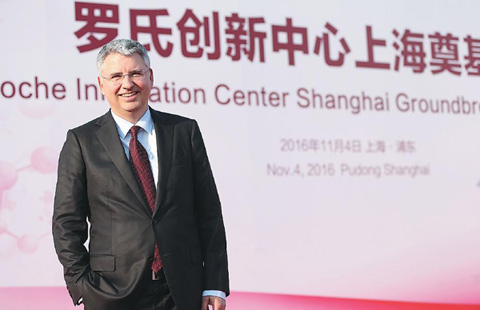Innovation is now a strategic priority for China
Since the launch of reform and opening-up policy in 1978, "made in China" products have established China as the world's factory.
However, the high-value work of innovation, design and development tended to originate outside of China. This is starting to change, and while China has a long way to go, its leadership is well aware of the challenge.
"Chinese capacity for indigenous innovation is weak, Chinese industrial technology is at a low level, and both Chinese basic and cutting-edge research are relatively unimpressive," Premier Wen Jiabao said in July 2011.
China's impressive economic development, particularly in the last 10 years, has created the world's second-largest economy. Global corporations inspired both by the increasing wealth in China, and recessions in their key traditional markets, have confirmed China as a strategic market, and often as their top growth priority.
Leading multinational corporations like Siemens, General Electric, Proctor & Gamble, PepsiCo and Nokia have ramped up their China innovation centers, tasking them to create products for both domestic and international consumption. Overall, there are now more than 1,500 foreign research and development centers in China, according to the Ministry of Commerce.
This rapid evolution is also driving Chinese companies to focus management time and attention on innovation. Traditionally, Chinese companies have succeeded by competing on cost, and by rapidly customizing proven product concepts to create products that are copies or incrementally modified versions of the originals.
While this strategy has enabled these companies to grow fast, many are struggling to build leading global brands, and their "follow the leader" approach has resulted in the Chinese being labeled as copiers.
In reality, "fast follower" is a strategy used by all leading corporations. The recent scramble to follow Apple's successful iPad launch in April 2010 is a great example.
Competitors quickly designed and manufactured 30 alternative tablet products, all ready for sale by December of that year. By the close of the following year, there were more than 100 tablets on the market. Samsung, Motorola, Microsoft, Lenovo and many other mighty corporations all followed Apple's lead.
The key difference between established global leaders and their Chinese competitors is that the leaders complement their "fast follower" capabilities and product offerings with additional products containing leading innovate features.
Successful product leaders gain market share, increase revenue and margins and create stronger brands that help their "follower" products. However, to succeed with a "leadership" strategy, companies must commit to the often significant risks and investments needed to continually create new markets and winning products.
"Fast follower" companies can achieve several significant benefits and typically win by being flexible, incrementally different, or better, fast and cheaper. They inherit a key advantage over product leaders in the form of reduced investment requirements and risk. As a result, "following" has been very attractive for Chinese companies.
The hard reality however is that to grow and go global means that a fast follower strategy is no longer sufficient for China.
A few Chinese companies have already proven their ability to innovate. Huawei has become the second-largest global telecommunications equipment maker to Ericsson, SANY has created huge record-breaking cranes and concrete pumping equipment and start-up Xiaomi has shipped millions of smartphones on the back of innovative software and product design. China's growth has provided infrastructure, increasingly capable talent and the financial firepower needed. Battelle and R&D Magazine estimate that China now spends the equivalent of $200 billion each year on research and development.
What all established MNCs have already achieved, but Chinese companies have yet to achieve, is a systematic method to improve product innovation and development. The leading global companies in each key sector - telecommunication, consumer electronics, automotive and industrial - have invested management time and attention to establish innovation capabilities over many years. They have built their capabilities in stages and have systematically delivered improved speed, revenue and margin growth. This requires a continuous evolution of strategy, business process, organizational structure, culture and competence.
Many Chinese companies struggle to plan and manage development projects that can launch new revenue earning products predictably, a basic capability for Asian and Western MNCs. Many have not yet established a culture of innovation or of systematic improvement. An innovation culture respects managers that recognize, raise and systematically resolve problems in their innovation capabilities.
It also requires that their staff have the mandate and motivation to collaborate across departments. This is particularly important as profitable innovation requires a combination of technical skills, experience of business models and knowledge of customers and competitors - skills that typically reside in different departments.
Once problems are recognized in China, improvements typically get made. Chinese companies must recognize that they need to achieve "selective leadership" in their product portfolios to develop strong brands and improved margins.
At this stage of China's development, innovation should be a CEO or board-level topic as the companies in each sector who improve fastest will be those that lead in their chosen markets and many of the others will simply struggle.
The authors are consulting Partners with PwC China's Innovation Practice.























